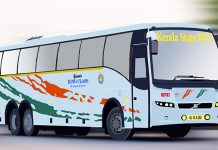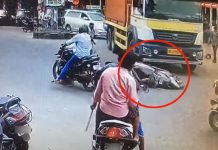The Kerala State Transport Corporation (KSRTC) has a glorious past. It has a history that dates back to before the formation of Kerala, making it one of the oldest State-operated and managed public road transport services in the country.
Passenger transport is a public utility service and so it becomes the duty of a welfare state to provide the most economical and comfortable mode of transport to the public. This must have been the cue for Maharaja Sree Chithira Thirunal Balarama Varma to launch the first ever public road transport service in the erstwhile Travancore State way back in 1938.
As a primary need
The Travancore State Manual, first compiled by V. Nagam Aiya in 1906 and later revised in 1940 by T.K. Velupillai notes that the government resolved to inaugurate a scheme of State transport to put in place an efficient and well-regulated transport system as it was one of the primary needs of the State.
A document from the Ernakulam Regional Archives states that the government decided to start the Travancore State Transport Department (TSTD) as it found that the existing system of public transport needed an overhaul. It was operated by private agencies and there was cut-throat competition between these agencies with profiteering being the sole motive. In order to prevent the public from being fleeced the government decided to introduce and regulate public transport in the State.
The manual also records one of Dewan C. P. Ramaswamy Aiyer’s speeches in which he clearly states some of the stringent rules slated to be introduced to regulate motor traffic in the State.
Interesting information is that the Dewan states that motor bodies will be manufactured in the State with ‘wood belonging to our forests.’ Not a single bus, the Dewan proclaims, would be allowed to ply on the roads of Travancore unless its body is built out of ‘Travancore timber by Travancore craftsmen.’
A special committee for the reorganisation of public transport was formed and it was decided to seek the services of an expert in this field. That brought E.G. Salter, who was Assistant Operating Superintendent of London Passenger Board, to Travancore. He joined the committee on September 20, 1937 and began working on the project.
Initially the department imported Comet chassis for 60 buses from England and they were fitted with Frank Perkins-made diesel engines under the direct supervision of Salter. The experimental design of the body created by Salter became the standard design of the rest of the buses.
Another noteworthy aspect was the manner of staff selection for TSTD. Most of the private operators on the Trivandrum-Kanyakumari route had to shut down their services with the route being nationalised. Many experienced drivers, conductors and inspectors lost their jobs. TSTD decided to recruit them. The archival records mention a proper selection process , which incidentally was the first-ever staff selection programme for a State public sector enterprise.
The official launch of the state road transport services was held on February 20, 1938. Maharaja Sree Chithira Thirunal inaugurated the service. He, along with members of his family, Col. Goda Varma Raja and other dignitaries travelled on the first bus through the Main Road to Kowdiar Square. Salter drove the bus, thereby earning the recognition of being the first driver of the State transport department.
A fleet of 33 buses and a huge crowd joined in celebration as the bus carrying the Maharaja moved forward. On February 21, 1938 the first bus operated from Trivandrum to Kanyakumari.
The service was a huge success right from the start not only because it began to bring in money to the exchequer but more importantly because it brought cheer to the lives of the common man, notes the archival report.
The early buses were like saloons with 23 soft leather seats. The entrance was through the rear with a passage in the middle. There were 10 first class seats in the front. The schedules, fares and bus stops were fixed and published. A parcel service was also started. People could use these buses to send goods through designated agents appointed by the government. These parcels were distributed to the addresses by the agents.
 |
| Old KSRTC stand of Kochi which situated near Boat Jetty. Photo around 50 years back |
 |
| The AMS buses that operated from Tripunithura in 1944 |
| KSRTC buses parked at Ernakulam KSRTC stand. |
The Motor Vehicle Act was passed in 1939. From modest beginnings of a small fleet of buses operating over three routes the department extended its activities and established a network of passenger services. The services were extended to Cochin in 1949 and to the Malabar in 1956.
The Kerala State Transport Corporation (KSRTC) came into existence in March 1965. The decision came following the Road Transport Corporation Act that came into force in 1950.
The KSRTC connects the State on road and serves as a link to villages, towns and neighbouring states. It has expanded its facilities and services, introduced state-of-the-art buses and still remains the State’s most visible public sector organisation.
Today, KSRTC is fighting to keep itself on road. It has been hit by financial crisis, defaulting on pension payment, struggling to pay the salary of those on rolls and failure to meet other financial exigencies.




















